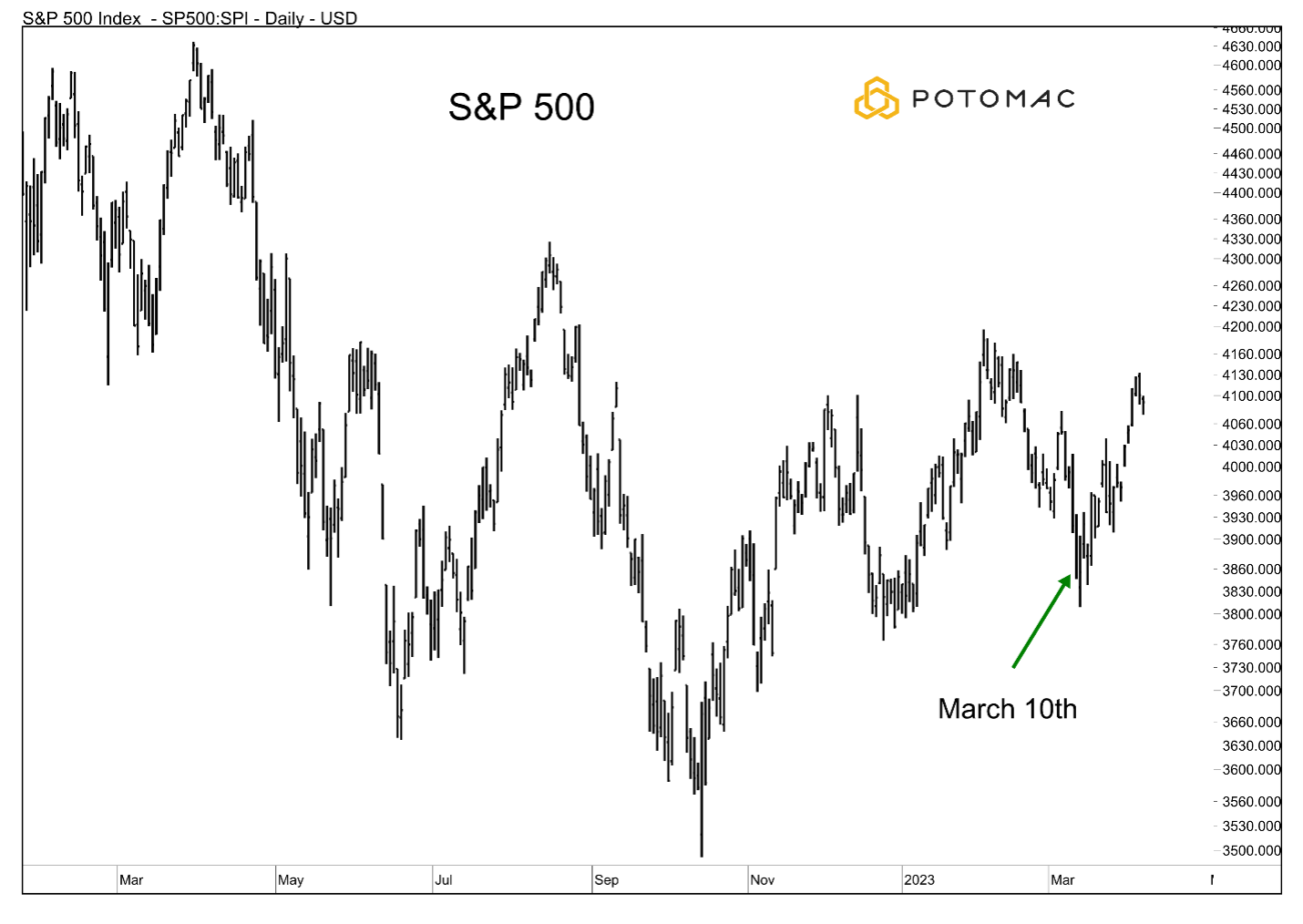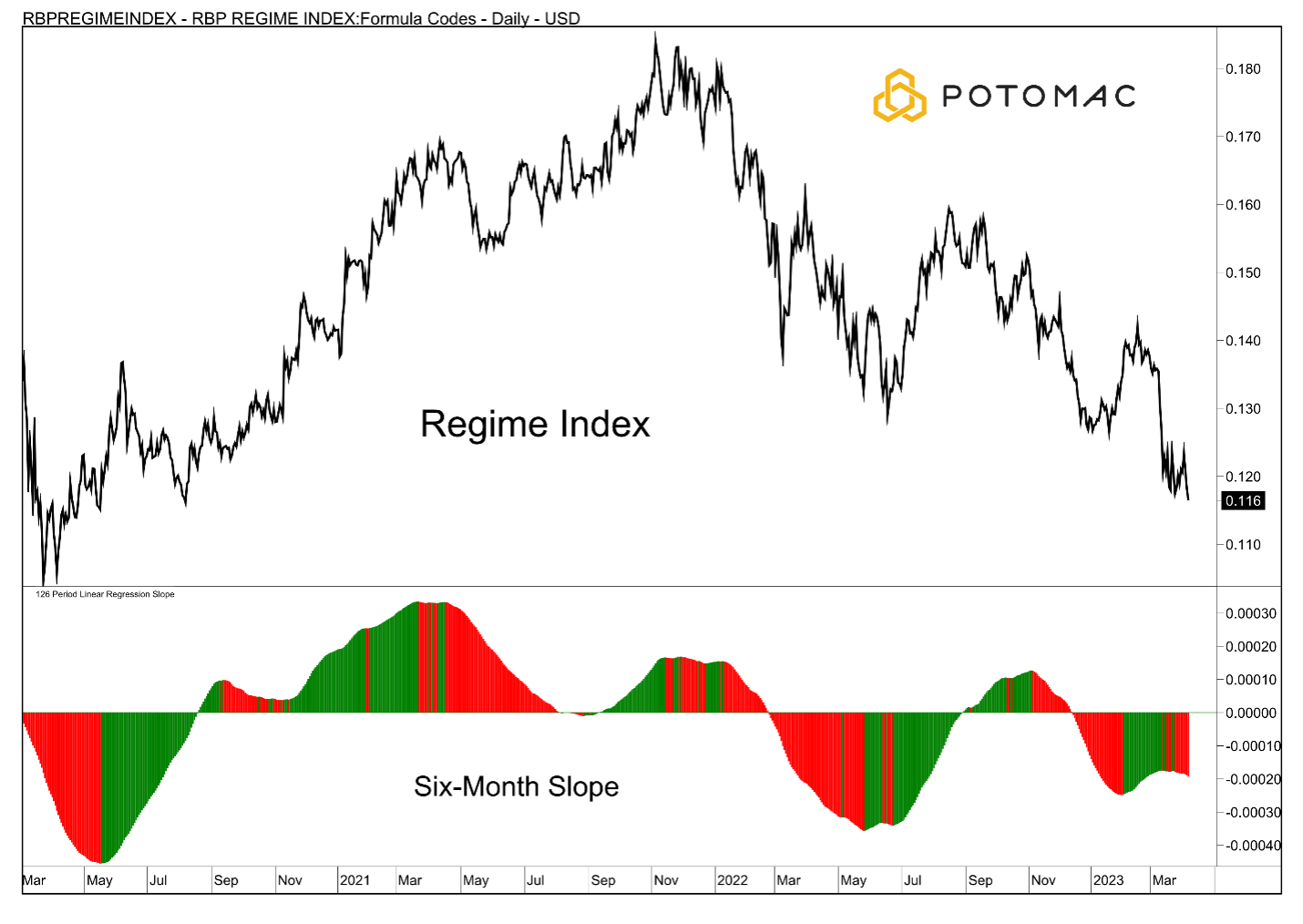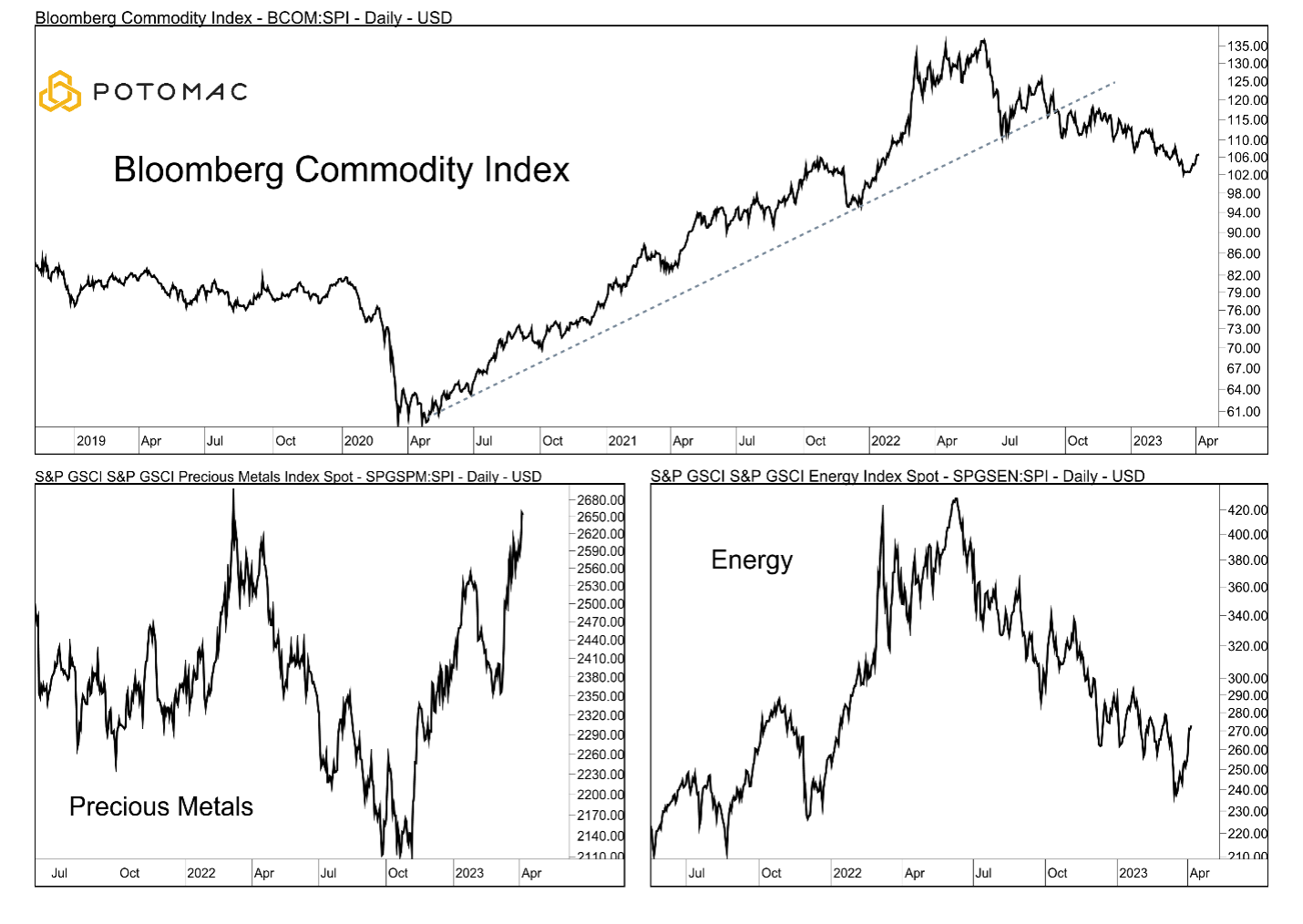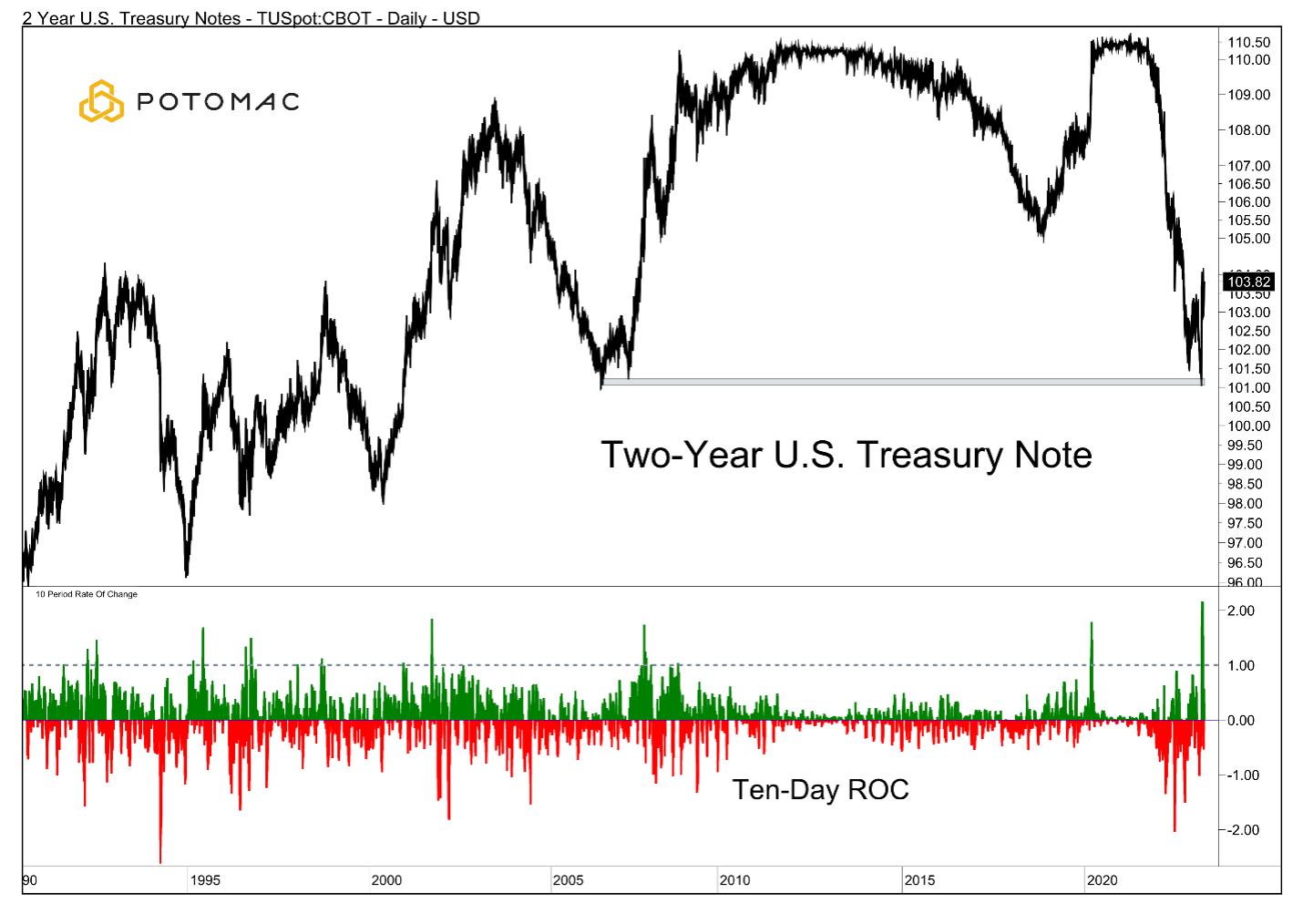
As an investor in my personal account, prior to joining Potomac Fund Management, I found that I got myself into the most trouble when I developed some elaborate, macro narrative about why the market just HAD to move in a certain direction. I would usually sell myself on the bearish narrative. It always sounds more intelligent.
For whatever reason, I am predisposed to “go bearish” quickly. Thankfully I recognize this in myself and now manage money by following a systematic, rules-based approach to markets. The benefit of this crystallized further on March 10, 2023. Leading up to that Friday morning, markets were uneasy as Silicon Valley Bank was facing a run and there were rumors circulating that Signature Bank was on the verge of collapse (both have subsequently failed). From there attention began to turn to First Republic and other regional banks that may have an issue with their loan books and investments now that interest rates have begun to move higher. My bearish predisposition had visions of Lehman weekend 2008 dancing in my head. Having had a front row seat for that event while sitting on a trading desk, I could not believe that we were facing another “crisis” led by the banks.
However, as I walked into my office that morning, I was greeted by a buy signal from one of our composite systems. That’s right, on the brink of Lehman 2.0 our model told us to get invested. If I were a discretionary manager, it is highly likely that I would not have been buying stocks that day. But the rules are the rules. They are based on facts; they are based on what is happening in the market. No narrative here. If it is important, it will show up in price. The S&P 500 closed March 10th at 3,861.59. The index closed the quarter on March 31st at 4,109.31 or 6.41% higher.

The chart above does a nice job of showing us that the market has been moving higher since the collapse of those two banks. It also shows us that the market has essentially gone nowhere since last June. We are in a rangebound environment. What is interesting is the amount of conviction that I see from both bulls and bears.
Those who have told themselves a bullish narrative see every positive day as proof that they are correct. The opposite is also true–with the volume of the bears’ roars picking up with the slightest bit of weakness on the tape. The problem with narratives is that they become hard to change. To change their view, an investor must admit that they are wrong. If they had expressed that view publicly, it would become even harder to change. People generally hate to admit that they are wrong.
With all this, if we wanted to create a narrative based on what we are seeing in the market, it would be one where the odds of a recession are increasing, and the market is calling the Federal Reserve’s bluff as it relates to interest rates.
The six-month slope of our regime index remains below zero and appears to be accelerating to the downside once again. The index is a combination of intermarket relationships across equities, fixed income, and commodities. For now, it is what we would refer to as an environmental indicator in that it does not generate trading signals, rather it helps to define the current environment. A declining six-month trend points to slowing economic growth.

Commodities seem to agree with this view. The Bloomberg Commodity Index has broken trend and is moving lower. Under the surface, Precious Metals are shining while Energy (economically sensitive) is in a clear downtrend. The asset that people buy when they are “concerned” is moving up while the one tied to economic growth is moving lower.

Commodity markets can be fickle, and some will argue that they can be manipulated. This week (April 3rd) OPEC+ has decided to cut production, sending the price of oil higher. The treasury market, however, is deeper and possibly more reliable. The front end of the treasury curve is sending a message that also confirms slowing growth. The Two-Year Note has exploded higher from levels last seen prior to the onset of the global financial crisis. In fact, the note registered a 10-day rate of change that surpassed what was seen in 2001, 2007 and 2020.

As the note has moved higher, the yield has moved lower, and this is the part where the market is calling the Fed’s bluff. Investors do not believe that there is much room/reason for them to continue to raise rates.
Perhaps more importantly, the move at the front of the curve has caused it to begin to re-steepen. While many like to use the inverted yield curve as a recession indicator, we can see that it is when the curve begins to correct itself that we are likely closer to a recession. It is the “uninversion” that should concern investors. We are not there as of this writing but are moving in that direction.

So, if we were in the business of selling narratives this is the one that I would be pitching. A policy error on the part of the Fed as they continue to raise rates into an economy that is at best slowing. At the same time, the odds of a recession are increasing.
I would hammer home the point by highlighting that Inflation appears to have peaked for now, providing air cover for the Fed to pause.

To be perfectly clear, we are not in the narrative business. We continue to follow our systematic process. We will not ignore our signals simply because of a narrative.
Potomac Fund Management ("Company") is an SEC-registered investment adviser. SEC registration does not constitute an endorsement of the advisory firm by the SEC nor does it indicate that the advisory firm has attained a particular level of skill or ability. This information is prepared for general information only and should not be considered as individual investment advice nor as a solicitation to buy or offer to sell any securities. This material does not constitute any representation as to the suitability or appropriateness of any investment advisory program or security. Please visit our FULL DISCLOSURE page. The company does not make any representations or warranties as to the accuracy, timeliness, suitability, completeness, or relevance of any information prepared by any unaffiliated third party, whether linked to the Company website or incorporated herein, and takes no responsibility for any of this information. The views of the Company are subject to change and the Company is under no obligation to notify you of any changes. Different types of investments involve varying degrees of risk, and there can be no assurance that the future performance of any specific investment or investment strategy will be profitable or equal to any historical performance level.
(PFM-609-20230413)
